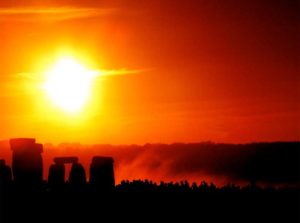A neolithic stone carving of the Big Dipper (Ursa Major) has been discovered in a remote part of Inner Mongolia, along with other “unexplained” carvings thought to be depictions of the gods.
Neolithic stone carving of Big Dipper discovered in northwest China
[singlepic=97,180,,,right]A neolithic stone carving of the Big Dipper star formation has been found on Baimiaozi Mountain near Chifeng City in northwest China’s Inner Mongolia Autonomous Region, according to experts.
The stone carving was discovered by Wu Jiacai, a 50-year-old researcher in literature and history with Wongniute Banner of Inner Mongolia.
Wu found a large yam-shaped stone, 310 centimeters long, onto which 19 stars had been carved. The representation of the Big Dipper is on the north face of the stone.
The stars are represented by indentations in the stone. The biggest indentation is 6 centimeters in diameter and 5 centimeters deep, said Wu.
“The stone was carved by neolithic dwellers,” said Gai Shanlin, researcher with the Inner Mongolia Institute of Cultural Relics and Archaeology (IMICRA) and an expert in stone carving.
The carving style proves this, said Gai. Astronomers’ conjectures about the shape of the Big Dipper some ten thousand years ago also match the carving.
“Finding a stone carving in China’s desert hinterland is a rare occurrence,” said Tala, director of IMICRA, who said it might help prove how ancient celestial bodies evolved.
Apart from the Big Dipper, Wu also found some “unexplained images” on the stone. He thinks they may depict ancient gods, such as the god of the sun and the god of horses. Further study would be needed to determine when the pictures were painted.
Many neolithic jade articles from the Hongshan Culture – such as a dragon with a pig’s mouth and a cloud-shaped pendant – have already been unearthed around Baimiaozi Mountain.
The Hongshan Culture was an aboriginal culture that existed in northern China about 6000 years ago.
Tala believes the discovery will contribute to knowledge about the origin and spread of Hongshan Culture.
Source: Xinhua












